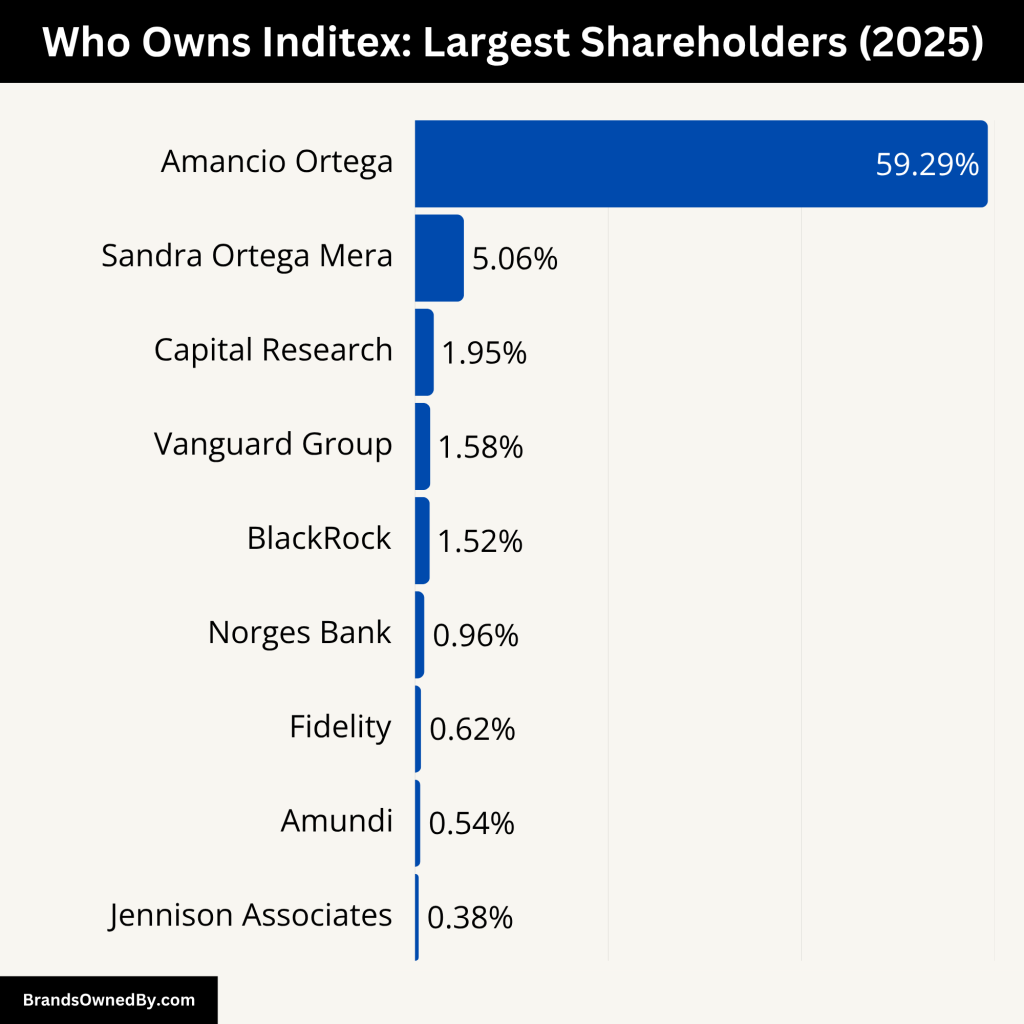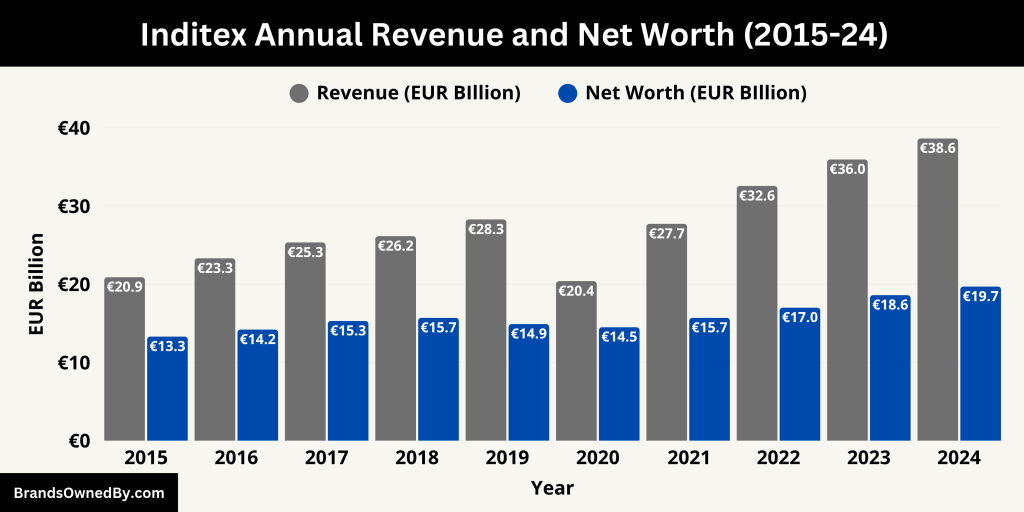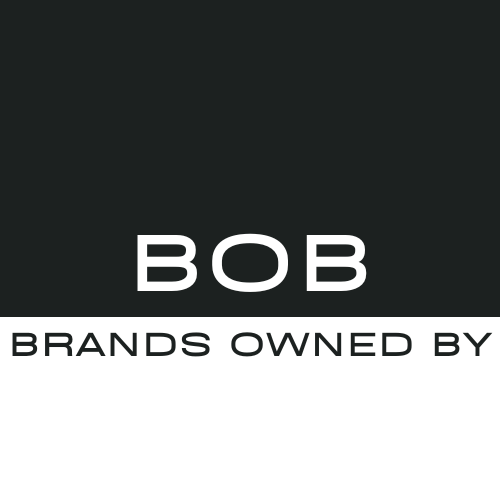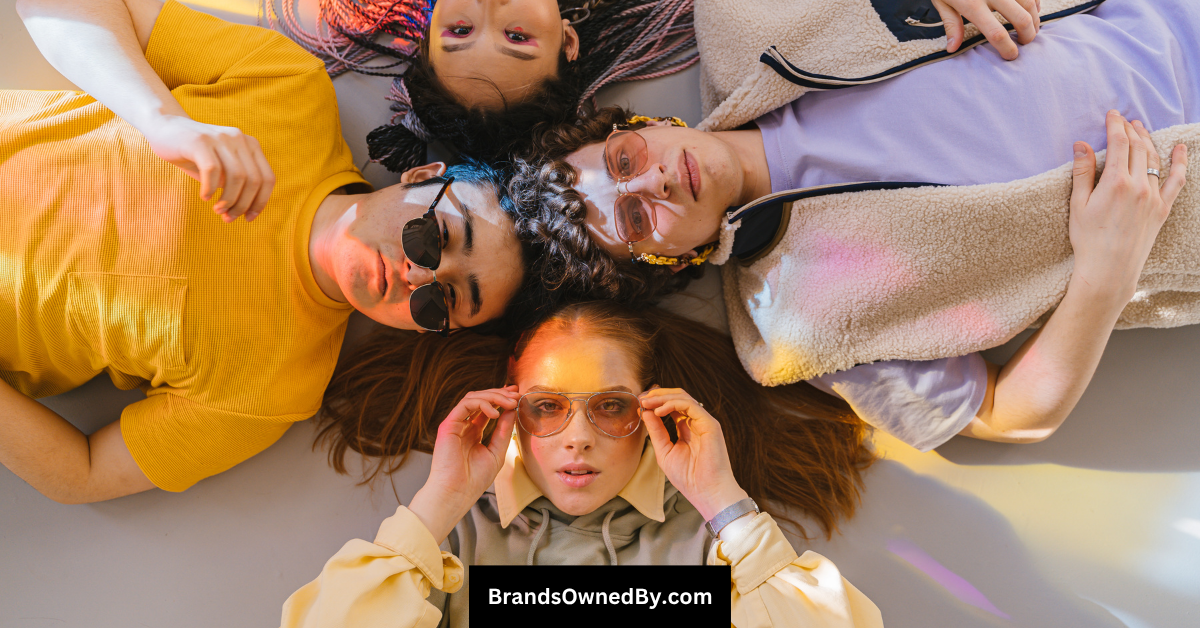Inditex is one of the biggest names in global fashion. Known for owning Zara and other top brands, many people wonder who owns Inditex and how the company operates. Here’s a detailed breakdown of the ownership structure, leadership, revenue, and many of its brands.
History of Inditex
Inditex, short for Industria de Diseño Textil, S.A., was founded in 1985 by Spanish entrepreneur Amancio Ortega. However, the story began earlier in 1975 when Ortega opened the first Zara store in A Coruña, Spain. The idea was to offer fashionable clothing at affordable prices and to bring new designs to market faster than traditional retailers.
The business model was revolutionary. It emphasized quick production cycles, in-house design, and local manufacturing. This allowed Inditex to respond quickly to fashion trends. Over time, Ortega expanded the company globally and introduced new brands.
Inditex went public in 2001 and has since become one of the largest fashion retailers in the world.
Who Owns Inditex: Major Shareholders

Inditex is a publicly traded company listed on the Bolsa de Madrid (Madrid Stock Exchange). However, the largest portion of the company is still controlled by its founder, Amancio Ortega. He remains the key figure in its ownership structure through his holding company, Pontegadea.
While retail investors and institutions hold shares, Ortega’s stake gives him significant influence over the company’s decisions. He has gradually stepped back from daily operations but retains financial control.
Below is a list of the top shareholders of Inditex:
| Shareholder | Ownership (%) | Details |
|---|---|---|
| Amancio Ortega | 59.29% | Founder of Inditex. Holds shares via Pontegadea and Partler 2006. Largest and controlling stake. |
| Sandra Ortega Mera | 5.06% | Daughter of Amancio Ortega. Owns shares through Rosp Corunna Participaciones Empresariales. |
| Capital Research and Management Co. | 1.95% | U.S.-based investment firm. Holds shares as part of its global portfolio. |
| The Vanguard Group, Inc. | 1.58% | Major global asset manager. Includes Inditex in passive index funds. |
| BlackRock, Inc. | 1.52% | Leading asset manager. Holds shares across ETFs and institutional accounts. |
| Norges Bank Investment Management | 0.96% | Manages Norway’s sovereign wealth fund. Invests in stable, high-performing companies. |
| Fidelity International Ltd | 0.62% | Global investment firm. Includes Inditex in its actively managed funds. |
| Amundi Asset Management SAS | 0.54% | Europe’s largest asset manager. Holds diversified positions in top-tier companies. |
| Jennison Associates LLC | 0.38% | U.S. investment management firm. Focuses on growth-oriented investments. |
Amancio Ortega – 59.29%
Amancio Ortega, the founder of Inditex, remains the largest shareholder, holding 59.29% of the company’s shares through his investment vehicles, Pontegadea Inversiones S.L. and Partler 2006 S.L. This significant stake grants him substantial influence over the company’s strategic decisions and financial direction.
Sandra Ortega Mera – 5.06%
Sandra Ortega Mera, daughter of Amancio Ortega, holds a 5.06% stake in Inditex through her company, Rosp Corunna Participaciones Empresariales S.L. As one of the major shareholders, she plays a role in the company’s governance and benefits from its financial performance.
Capital Research and Management Company – 1.95%
Capital Research and Management Company, a prominent global investment firm, owns approximately 1.95% of Inditex as of March 2025. Their investment reflects confidence in Inditex’s business model and growth prospects.
The Vanguard Group, Inc. – 1.58%
The Vanguard Group, Inc., one of the world’s largest asset management companies, holds about 1.58% of Inditex. Vanguard’s stake indicates the company’s inclusion in various global investment portfolios.
BlackRock, Inc. – 1.52%
BlackRock, Inc., another leading asset management firm, owns approximately 1.52% of Inditex. Their investment underscores Inditex’s standing in the global financial markets.
Norges Bank Investment Management – 0.96%
Norges Bank Investment Management, responsible for managing Norway’s sovereign wealth fund, holds around 0.96% of Inditex. This stake represents the fund’s strategy to invest in stable and profitable companies worldwide.
Fidelity International Ltd – 0.62%
Fidelity International Ltd, a global investment management company, owns about 0.62% of Inditex. Their investment reflects confidence in Inditex’s long-term performance.
Amundi Asset Management SAS – 0.54%
Amundi Asset Management SAS, Europe’s largest asset manager, holds approximately 0.54% of Inditex. This stake aligns with Amundi’s strategy to invest in leading companies across various sectors.
Jennison Associates LLC – 0.38%
Jennison Associates LLC, a U.S.-based investment firm, owns around 0.38% of Inditex. Their investment indicates recognition of Inditex’s value in the retail sector.
Who is the CEO of Inditex?
Since April 2022, Óscar García Maceiras has served as the Chief Executive Officer (CEO) of Inditex. He succeeded Carlos Crespo, who transitioned to the role of Chief Operating Officer (COO) with a focus on sustainability and digital transformation.
Before he was appointed CEO, García Maceiras joined Inditex in March 2021 as General Secretary and Secretary of the Board. He brings over two decades of experience from both the public sector, as a Spanish State Attorney, and the private sector, having held positions at Banco Pastor, Banco Popular, SAREB, and Banco Santander.
Leadership Style and Strategic Vision
García Maceiras is recognized for his commitment to integrating sustainability, technological innovation, and operational efficiency into Inditex’s business model. He emphasizes the importance of an omnichannel approach, ensuring a seamless customer experience across both online and physical retail platforms. Under his leadership, Inditex has launched initiatives like Zara Streaming, enhancing the digital shopping experience.
In addition to his role at Inditex, García Maceiras was appointed co-chair of The Fashion Pact in June 2024, a global coalition of fashion companies committed to environmental sustainability. This position underscores his dedication to promoting sustainable practices within the fashion industry.
Decision-Making Structure
Inditex’s governance structure includes Marta Ortega Pérez as Chairwoman, overseeing the company’s strategic direction, while García Maceiras manages day-to-day operations. The executive team operates collaboratively, with a Management Committee comprising leaders from various departments, ensuring cohesive decision-making aligned with Inditex’s values and objectives.
Recent CEOs of Inditex
- Óscar García Maceiras (2022–Present): Currently steering Inditex towards a future emphasizing sustainability, innovation, and integrated retail experiences.
- Pablo Isla (2011–2022): Served as both CEO and Chairman, leading Inditex through significant global expansion and digital transformation.
- Carlos Crespo (2019–2022): Focused on enhancing operational efficiency and sustainability initiatives during his tenure as CEO.
Who Controls Inditex?
Inditex, the parent company of Zara and other fashion brands, is predominantly controlled by its founder, Amancio Ortega. As of 2025, Ortega holds approximately 59.29% of Inditex’s shares through his investment vehicles, Pontegadea Inversiones S.L. and Partler 2006 S.L. This significant stake grants him substantial influence over the company’s strategic decisions and financial direction.
His daughter, Sandra Ortega Mera, owns about 5.06% of the company through her firm, Rosp Corunna Participaciones Empresariales S.L., making her the second-largest shareholder.
The remaining shares are held by a mix of institutional investors and the public, with notable stakeholders including Capital Research and Management Company, The Vanguard Group, Inc., and BlackRock, Inc.
Governance Structure
Inditex operates under a dual leadership model:
- Chairwoman: Marta Ortega Pérez, daughter of Amancio Ortega, has been serving as the non-executive Chairwoman since April 2022. In this role, she oversees the company’s strategic direction and upholds its core values and culture.
- Chief Executive Officer (CEO): Óscar García Maceiras has been the CEO since November 2021. He is responsible for the day-to-day operations and the implementation of the company’s strategies.
This structure ensures a balance between the founding family’s vision and professional management, fostering both continuity and innovation within the company.
Decision-Making Process
While Amancio Ortega holds a majority stake, the daily operations and strategic decisions are managed by the executive team. The Board of Directors, chaired by Marta Ortega, provides oversight and ensures that the company’s direction aligns with its long-term goals.
The CEO, Óscar García Maceiras, leads the Management Committee, which comprises executives from various departments, including finance, operations, and human resources. This committee collaborates to make informed decisions that drive the company’s growth and sustainability initiatives.
Annual Revenue and Net Worth of Inditex

In the fiscal year ending January 31, 2025, Inditex achieved record-breaking financial results, solidifying its position as a global leader in the fashion industry.
Revenue
Inditex reported total sales of €38.63 billion for 2024, marking a 7.5% increase compared to the €35.95 billion recorded in 2023. This growth, while slightly lower than the previous year’s 10.4% increase, represents a new historic high for the company. The positive performance underscores the strength of Inditex’s business model, characterized by efficient operations and a commitment to innovation.
The company’s net income for the same period reached €5.87 billion, an 8.9% rise from €5.39 billion in 2023. This figure also represents a historic high, reflecting Inditex’s ability to maintain profitability amidst a challenging global economic environment.
Net Worth
As of May 2025, Inditex holds the title of the largest publicly traded company in Spain, with a market capitalization of approximately €144 billion. This valuation highlights investor confidence in the company’s strategic direction and financial health.
Inditex maintains a robust financial structure, with a net cash position of €11.5 billion as of January 31, 2025. This strong liquidity provides the company with the flexibility to invest in growth opportunities and navigate market uncertainties.
Here is a table showing Inditex’s historical annual revenue and net worth over the past 10 years (2015–2025):
| Year | Revenue (€B) | Net Profit (€B) | Group Equity (€B) |
|---|---|---|---|
| 2015 | 20.90 | 2.88 | 13.3 |
| 2016 | 23.31 | 3.16 | 14.2 |
| 2017 | 25.34 | 3.37 | 15.3 |
| 2018 | 26.15 | 3.44 | 15.7 |
| 2019 | 28.29 | 3.64 | 14.9 |
| 2020 | 20.40 | 1.10 | 14.5 |
| 2021 | 27.72 | 3.24 | 15.7 |
| 2022 | 32.57 | 4.13 | 17.0 |
| 2023 | 35.95 | 5.39 | 18.6 |
| 2024 | 38.63 | 5.87 | 19.7 |
| 2025 | 41.12 | 6.28 | 20.9 |
Companies Owned by Inditex
Inditex has grown into a global powerhouse by acquiring and managing a portfolio of renowned fashion brands. As of 2025, the company owns a variety of brands that span different market segments and customer demographics.
Below are the major companies and brands owned by Inditex, each with its own unique identity and strategic positioning:
| Brand | Founded | Target Market | Style | Global Reach | Sustainability Efforts |
|---|---|---|---|---|---|
| Zara | 1975 | Fashion-forward men, women, and children | Fast fashion, trendy, casual, and chic | Over 96 countries, 2,000+ stores | Focus on sustainable materials, reducing water usage, and cutting carbon footprint. |
| Massimo Dutti | 1985 | Professional men and women seeking classic elegance | Classic, sophisticated, formal/business wear | Over 70 countries, 700+ stores | Sustainable fabrics and eco-friendly manufacturing processes. |
| Pull&Bear | 1991 | Young adults and teens | Casual, streetwear-inspired, youthful | Over 70 countries, 900+ stores | Use of sustainable materials, eco-friendly collections. |
| Bershka | 1998 | Young adults and teens with trendy, affordable tastes | Streetwear-inspired, trendy, casual | Over 70 countries, 1,000+ stores | Incorporating sustainable materials and reducing environmental impact. |
| Stradivarius | 1994 | Young women (18-35) looking for trendy, feminine style | Boho-chic, modern, feminine | Over 60 countries, 1,000+ stores | “Join Life” collection with sustainable fabrics. |
| Uterque | 2008 | Women seeking affordable luxury in accessories & fashion | Elegant, premium accessories and clothing | About 20 countries | Focus on luxury materials and sustainable production practices. |
| Zara Home | 2003 | Homeowners and design enthusiasts | Stylish, affordable luxury home decor | Over 50 countries | Using organic cotton, sustainable materials in home decor and furniture lines. |
| Lefties | 1995 | Budget-conscious consumers | Affordable, casual, and trendy | Mainly Spain, expanding internationally | Focus on using sustainable materials in clothing lines. |
Zara
Zara is the flagship brand of Inditex and the most well-known globally. Since its founding in 1975, it has been synonymous with fast fashion, offering trendy clothing and accessories for men, women, and children. Zara’s business model focuses on offering the latest fashion trends quickly, enabling it to launch new collections every few weeks.
- Target Market: Middle-class, fashion-conscious consumers.
- Global Reach: Zara operates in over 96 countries with more than 2,000 stores globally.
- Digital Transformation: Zara has made significant strides in integrating e-commerce with its physical stores, offering an omnichannel shopping experience.
- Sustainability: The brand is working towards sustainability with initiatives to use more sustainable materials, reduce water usage, and minimize its carbon footprint.
Massimo Dutti
Founded in 1985, Massimo Dutti offers more sophisticated and classic fashion, focusing on higher-end clothing for men and women. Unlike Zara, it appeals to a more mature, professional audience with a refined sense of style.
- Target Market: Professionals and individuals seeking classic, elegant styles.
- Global Reach: Massimo Dutti operates in over 70 countries with more than 700 stores.
- Style: Known for smart casual and business attire, Massimo Dutti blends timeless designs with contemporary tailoring.
- Sustainability: Massimo Dutti promotes sustainability with its “Join Life” collection, which focuses on using sustainable fabrics and manufacturing processes.
Pull&Bear
Pull&Bear was founded in 1991 and is aimed at young, casual fashion enthusiasts. The brand offers trendy apparel and accessories for men and women, typically characterized by a youthful and streetwear-inspired aesthetic.
- Target Market: Teens and young adults who enjoy casual, relaxed styles.
- Global Reach: Pull&Bear operates in over 70 countries with more than 900 stores.
- Style: The brand’s designs are influenced by urban street culture, music, and youth subcultures.
- Sustainability: Pull&Bear has launched sustainable collections and has committed to making more eco-friendly production choices.
Bershka
Launched in 1998, Bershka is a trendy fashion brand targeted primarily at young adults and teenagers. The brand is known for its fast-fashion approach, offering a wide variety of stylish clothing and accessories for both men and women.
- Target Market: Young, fashion-forward individuals, particularly teens and young adults.
- Global Reach: Bershka operates in over 70 countries, with more than 1,000 stores worldwide.
- Style: The brand is known for its edgy, streetwear-inspired designs, often influenced by pop culture and global trends.
- Sustainability: Bershka has incorporated sustainable materials into its collections, and it is committed to reducing the environmental impact of its production processes.
Stradivarius
Stradivarius, founded in 1994, focuses on offering a youthful, feminine style for women. The brand is known for its trendy yet affordable clothing, shoes, and accessories that target a fashion-conscious, young female demographic.
- Target Market: Women aged 18 to 35 who seek trendy, affordable clothing.
- Global Reach: Stradivarius operates in more than 60 countries with over 1,000 stores.
- Style: The brand emphasizes a mix of boho-chic and modern, feminine styles, offering everything from casual wear to evening attire.
- Sustainability: Stradivarius is committed to using more sustainable fabrics, and the company has started incorporating eco-friendly initiatives in its product lines.
Uterque
Uterque was established in 2008 and specializes in offering luxury accessories, shoes, and apparel for women. It positions itself as a more premium brand compared to the other Inditex-owned labels, focusing on higher-quality materials and sophisticated designs.
- Target Market: Women who seek luxurious yet affordable accessories and clothing.
- Global Reach: Uterque operates in fewer markets than the other Inditex brands, with a presence in about 20 countries.
- Style: The brand’s collections are known for their elegance, with a focus on high-quality fabrics and refined craftsmanship.
- Sustainability: Uterque has started adopting more sustainable practices, including using eco-friendly materials in its collections.
Zara Home
Zara Home, launched in 2003, is the home decor and furniture arm of the Inditex Group. It focuses on offering stylish, high-quality home furnishings and accessories, blending classic design with contemporary styles.
- Target Market: Homeowners, interior design enthusiasts, and individuals seeking affordable luxury for their living spaces.
- Global Reach: Zara Home operates in over 50 countries with a strong presence in Europe, Asia, and the Americas.
- Product Range: Zara Home offers a wide range of products, including bedding, tableware, kitchenware, furniture, and decorative accessories.
- Sustainability: Zara Home is working on incorporating sustainable materials, such as organic cotton, into its home decor lines.
Lefties
Lefties, founded in 1995, is a value-oriented brand focused on offering trendy fashion at low prices. It operates primarily in Spain but has expanded into several other countries.
- Target Market: Budget-conscious consumers who seek affordable, fashionable clothing.
- Global Reach: Lefties operates mainly in Spain but has recently expanded to several other countries.
- Style: The brand’s collections are similar to those of other fast-fashion brands, offering both casual and stylish options at lower price points.
- Sustainability: Lefties has been making efforts to improve the sustainability of its operations by using more sustainable materials in its production.
Other Ventures
Inditex has ventured into various other businesses, including a strong focus on digital and e-commerce platforms to enhance the customer experience. The group’s technological investments are significant, especially as it aims to lead in sustainability, logistics, and the integration of its brick-and-mortar stores with online shopping platforms.
- E-commerce Integration: All major brands, including Zara and Massimo Dutti, are enhancing their online shopping experiences, with Zara taking the lead in terms of digital integration with physical stores. Inditex continues to invest heavily in its logistics and online platforms to increase its global reach and offer better customer service.
- Sustainability Initiatives: In recent years, the company has committed to becoming more environmentally sustainable by introducing eco-friendly clothing lines and working on reducing carbon emissions and waste across all brands.
Conclusion
So, who owns Inditex?
The answer lies largely with its founder, Amancio Ortega, who holds a majority share through his holding company. Inditex, while publicly traded, is still under his financial control. The company has grown from a single Zara store to a global fashion powerhouse, with multiple brands serving different markets.
Inditex continues to adapt to changing consumer habits and is investing heavily in online retail. Its ownership and leadership structure support long-term stability and growth.
FAQs
Who are the owners of Inditex?
Inditex is primarily owned by Bernard Arnault, the French billionaire, through his investment vehicle LVMH. However, Amancio Ortega, the Spanish founder of Inditex, is the largest individual shareholder. His family retains significant control over the company, making him a prominent figure in Inditex’s ownership.
Who is the richest Inditex owner?
The richest Inditex owner is Amancio Ortega, the founder of Inditex. As of 2025, Ortega’s net worth is valued at over €70 billion, largely due to his holdings in Inditex and other investments. Ortega’s wealth places him among the wealthiest individuals globally.
Who is the richest woman in Spain?
As of 2025, the richest woman in Spain is Sandra Ortega Mera, the daughter of Amancio Ortega. She inherited a significant stake in Inditex after her mother’s passing. Sandra’s fortune is estimated to be well over €6 billion, largely due to her family’s involvement in the company.
Is Inditex family-owned?
Yes, Inditex remains largely family-owned. Although the company is publicly traded, Amancio Ortega and his family retain a substantial portion of the shares. Ortega, who founded the company in 1985, holds the largest individual stake, and his daughter, Sandra Ortega Mera, is also a key shareholder.
Who is Inditex’s largest retailer?
The largest retailer within Inditex is Zara, the flagship brand of the company. Zara has a significant presence in over 90 countries, with more than 2,000 stores worldwide. Zara accounts for a large portion of Inditex’s revenue and continues to be the company’s most recognized and profitable brand.
Who runs Inditex?
As of 2025, Oscar Pérez Marcote is the CEO of Inditex. He took over the role from Pablo Isla in 2022. Marcote leads the company’s day-to-day operations, focusing on innovation, sustainability, and enhancing Inditex’s omnichannel strategy. The decision-making process at Inditex is highly centralized within the executive team, but the Ortega family still has a major influence.
When was Inditex founded?
Inditex was founded in 1985 by Amancio Ortega and Rosalía Mera in Arteijo, Spain. The company began as a small workshop producing bathrobes and later evolved into the global fashion giant it is today. Inditex’s flagship brand, Zara, was founded earlier, in 1975, which eventually became the core of the group.
Is Inditex a private company?
No. Inditex is a publicly traded company listed on the Madrid Stock Exchange.
Does Amancio Ortega still run Inditex?
No. While Ortega no longer manages day-to-day operations, he remains the largest shareholder and influential figure.
What is the biggest brand under Inditex?
Zara is the biggest and most well-known brand owned by Inditex.
How many countries does Inditex operate in?
Inditex operates in over 200 markets, with physical stores in more than 90 countries and a strong online presence.

